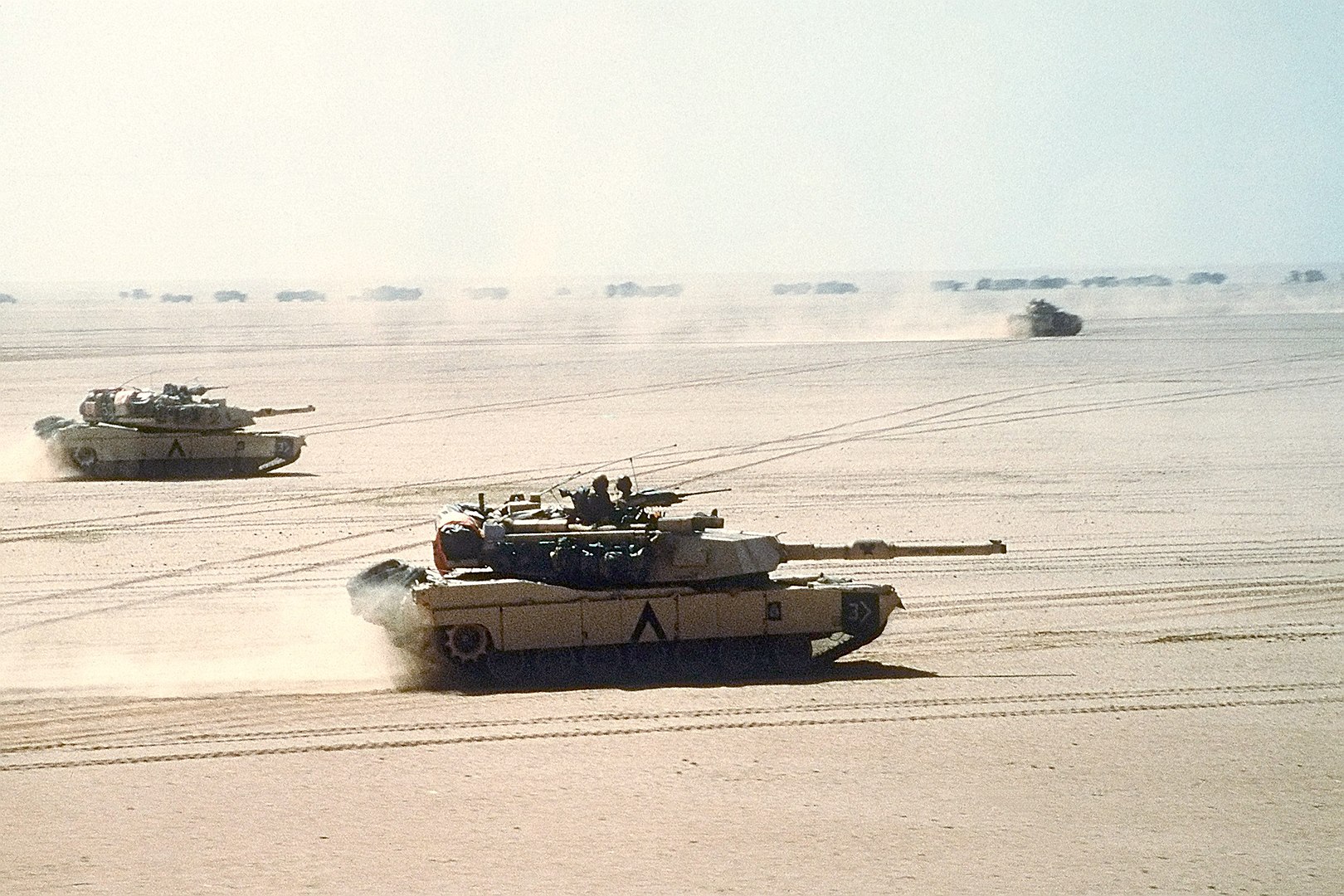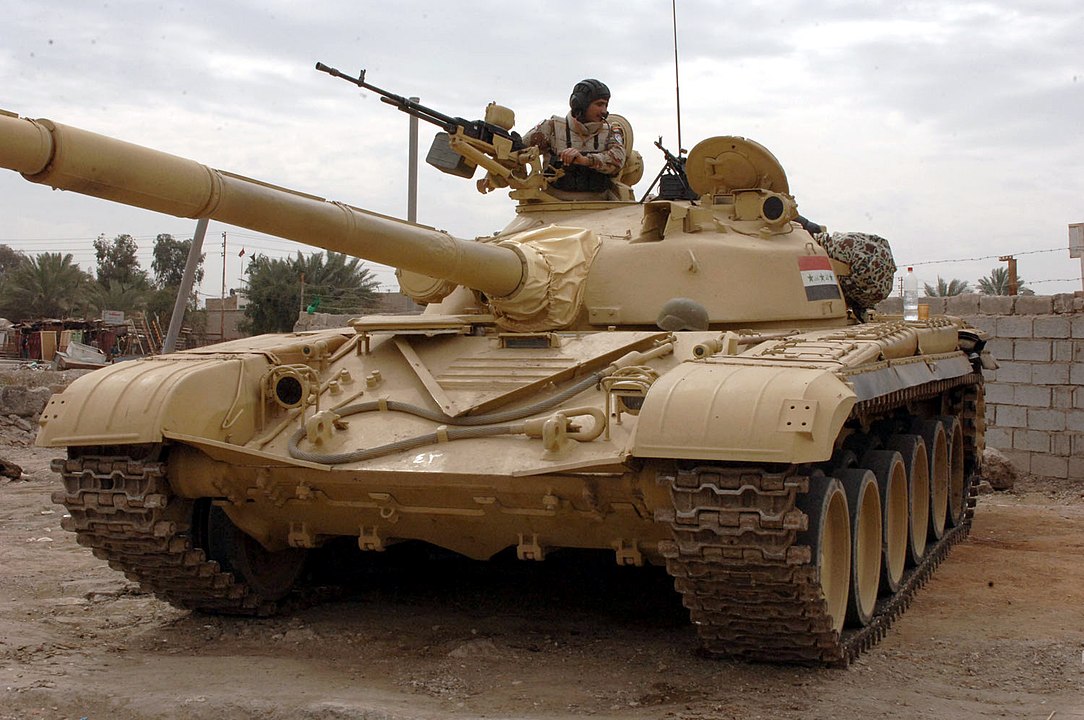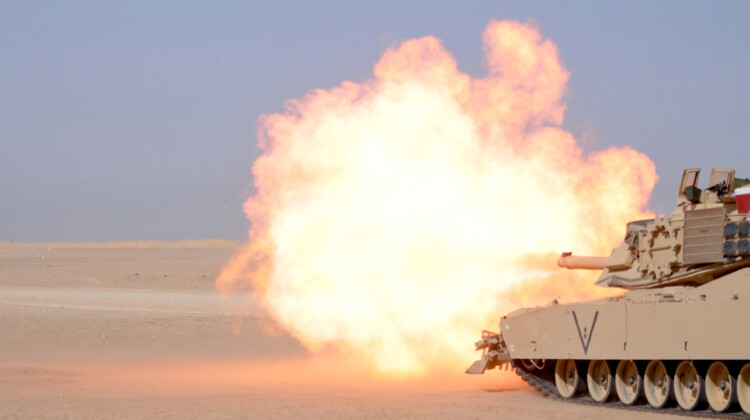The Gulf War of 1990-1991 marked a turning point in the history of armored warfare, with the clash between two iconic tanks: the American M1 Abrams and the Soviet-built T-72. These formidable machines were at the forefront of the ground conflict, and their showdown demonstrated the stark contrast between Western and Eastern tank design philosophies.
In this article, we will delve into the technical specifications, performance, and impact of the Abrams and T-72 during the Gulf War, shedding light on the factors that contributed to the Abrams’ dominance on the battlefield.
The M1 Abrams: A Technological Marvel

The M1 Abrams was a product of American engineering excellence, designed to provide a superior combination of firepower, mobility, and protection. Its key features set it apart from its counterparts:
- Firepower: The Abrams was equipped with a 120mm smoothbore gun, capable of firing a variety of shells, including armor-piercing fin-stabilized discarding sabot (APFSDS) rounds. This gun could accurately engage targets at extended ranges, giving the tank a significant advantage over the T-72’s 125mm smoothbore gun.
- Armor: The Abrams featured advanced composite armor, with a subset of them including layers of depleted uranium (DU) to maximize protection against various threats, particularly shaped charge projectiles. This armor proved highly effective against the T-72’s armor-piercing rounds.
- Mobility: With a gas turbine engine producing 1,500 horsepower, the Abrams boasted impressive speed and maneuverability, allowing it to traverse the desert terrain of the Gulf War theater of operations with ease. The T-72, with its less powerful engine, couldn’t match the Abrams in terms of speed and agility. Still, fuel consumption rates were higher for the Abrams.
- Fire Control: The Abrams featured advanced fire control systems, including thermal imaging and laser rangefinders, which greatly enhanced target acquisition and engagement accuracy, especially in low-light conditions. This was a crucial advantage over the T-72.
The T-72: A Soviet Workhorse
The T-72, on the other hand, was a Soviet-designed tank that had seen extensive use worldwide. While it possessed specific strengths, it also had several notable weaknesses:
- Firepower: The T-72 was armed with a 125mm smoothbore gun, which was comparable to the Abrams’ 120mm gun in terms of caliber but lacked the advanced ammunition types and fire control systems of the American tank.
- Armor: The T-72’s armor, while effective against older tank rounds, was not as formidable as the composite armor of the Abrams. This left it vulnerable to the Abrams’ APFSDS rounds.
- Mobility: Powered by a diesel engine, the T-72 had a less powerful engine compared to the Abrams, resulting in lower top speeds and less agility. This limited its ability to maneuver effectively in the challenging desert terrain of the Gulf region.
- Fire Control: The T-72’s fire control systems were less advanced than those of the Abrams, making it less accurate in engaging distant or moving targets, especially at night.

The Gulf War Showdown
During the Gulf War, the Abrams and T-72 faced off in various engagements, and the differences in their performance became evident. One of the most famous encounters occurred during the Battle of 73 Easting on February 26, 1991. In this battle, a group of American M1 Abrams tanks engaged and decisively defeated a group of Iraqi T-72s. The outcome of this battle highlighted the advantages of the Abrams.
- Superior Firepower: The Abrams’ 120mm gun and advanced fire control systems allowed it to engage the T-72s at long range with high accuracy. The American tanks could hit their targets while remaining out of the effective range of the T-72s’ less accurate 125mm guns.
- Effective Armor: The Abrams’ composite armor, some including DU layers, proved highly effective in stopping T-72 projectiles. This gave American crews a significant advantage in terms of survivability.
- Swift Mobility: The Abrams’ superior mobility and maneuverability allowed it to rapidly reposition and exploit weaknesses in the Iraqi tank formations, particularly in rugged terrain and steep inclines. This agility proved critical in the fast-paced nature of modern armored warfare. However, it is worth noting how the T-72’s reliability and durability, as well as its lightweight, can be an advantage during certain operational scenarios against the M1s.
- Technological Superiority: The advanced technology in the Abrams, including thermal imaging and laser rangefinders, gave American tank crews a substantial edge in target acquisition and engagement, particularly in low-visibility conditions.
The Gulf War’s Enduring Influence on Military Strategy
The Gulf War tank showdown between the M1 Abrams and the T-72 highlighted the stark differences in design philosophies between Western and Eastern tank manufacturers. The Abrams’ superior firepower, advanced armor, agility, and technology gave it a clear advantage over the T-72 during the conflict. This advantage was clearly demonstrated in engagements like the Battle of 73 Easting.
The Gulf War served as a testament to the effectiveness of American tank design and the importance of technological superiority on the modern battlefield. The Abrams’ performance in this conflict reinforced its status as one of the world’s premier main battle tanks, while the T-72’s shortcomings underscored the need for continuous improvement in Soviet tank design. Future years would see significant improvements in the design and functionality of the T-72.
Ultimately, the Gulf War tank showdown was a pivotal moment in the history of armored warfare, highlighting the importance of innovation, mobility, and technological superiority in achieving victory on the modern battlefield. The M1 Abrams emerged from this conflict as a symbol of American military prowess and remained a formidable force in armored warfare to this day.










COMMENTS
You must become a subscriber or login to view or post comments on this article.